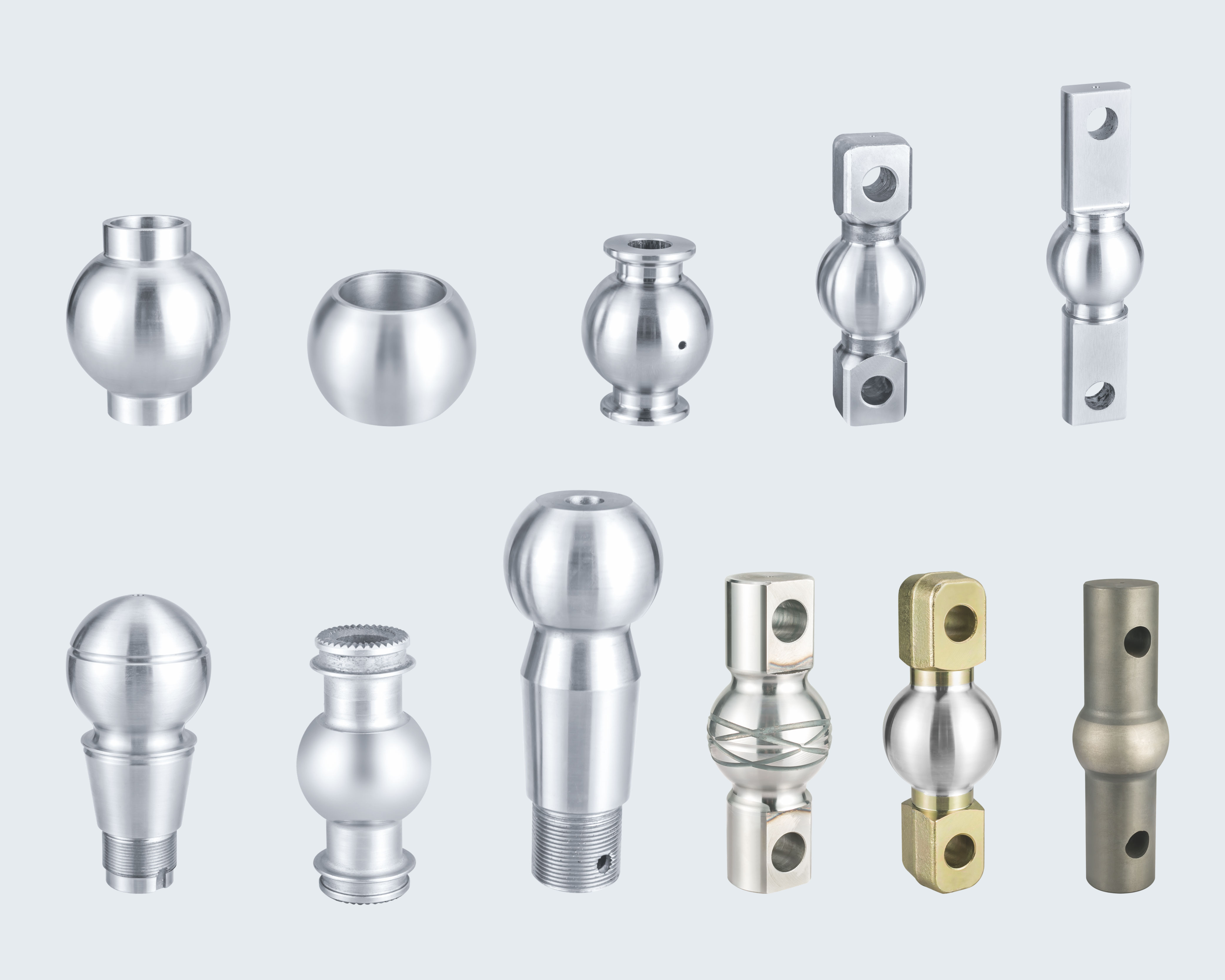Ball joint, also commonly known as ball head, ball joint or ball joint, is a key component of the connecting part of the car steering rod. Ball pins are key components of automotive steering systems that require wear resistance, high strength, and support for multiple connection designs. It undertakes the articulated function of the steering mechanism, connecting the steering mechanism and suspension of the car, ensuring smooth steering and normal wheel bouncing of the vehicle.
Due to the outward inclination and toe angle of the car's steering wheels, as well as the presence of a rear inclination and an inward inclination of the main pin, the steering rod needs to undergo complex spatial movements during steering and wheel bouncing. Therefore, ball pins must be used for articulation at the joints of the transmission mechanism to ensure flexibility of movement. At the same time, the surface of the ball pin needs to be wear-resistant, while the interior needs to have sufficient strength and toughness to withstand various stresses.
1.1 Ball Sales Function and Design Requirements
The ball pin assembly, including the ball pin, ball seat, ball bowl, stopper cover, and sealing cover, is connected to the control arm and steering knuckle, responsible for transmitting force and torque to ensure stable vehicle operation. This connection must be rigid to ensure sufficient strength and stiffness, while preventing component slippage, deformation, or damage.
1.2 Connection method between ball pin and control arm
Multiple connection methods are available, such as riveting, bolt connection, pressing, welding, and integrated, each with its own advantages and disadvantages. There are various connection methods between ball pins and control arms, such as riveting, bolt connection, press in, welding, and integrated. Although the integrated connection has high strength and good space utilization, it has a high cost and is mostly used for mid to high end suspensions. The other four methods are selected based on design space, craftsmanship level, and cost considerations.
1.3 Steering Joint Connection Method
Similarly, the connection between the ball pin and the steering knuckle also adopts various methods, such as taper connection, slotted cylindrical connection, and cylindrical connection with spherical surface. Mainly including tapered connections and slotted cylindrical connections, different designs are selected for different steering joint materials. Cylindrical connections with spherical surfaces are mainly used for aluminum alloy steering knuckles, aiming to increase the contact area and prevent aluminum alloy deformation. Conical connections and slotted cylindrical connections are commonly used for cast iron steering knuckles. This article will focus on the design and calculation methods of tapered connections and slotted cylindrical connections.
2.1 Ball Pin Size and Material Selection
The diameter of the ball pin affects the load-bearing capacity, and the selection of materials should be based on the appropriate standards and materials according to the load. The working surface of the ball pin requires good lubrication, so oil grooves or passages are usually designed on the ball bowl or ball pin. However, in order to simplify the maintenance process, modern car designs tend to use plastic ball bowls that do not require lubricating oil, namely self-lubricating ball bowls, which are increasingly being widely used.

2.2 Ball Pin Stress Verification and Surface Treatment
By verifying stress and surface treatment, the strength and durability of the ball pin are improved, and relevant design standards are followed. The manufacturing materials for ball pins include carburized steels such as 12CrNi3, 15CrMo, 20CrNi, and 20CrMnTi, as well as cyanide steels such as 35Cr and 35CrNi. In addition, quenched and tempered steel SCM435 can also be used for the manufacturing of ball pins. In order to improve wear resistance, these materials usually require surface treatments such as carburizing and quenching, carbonitriding, or surface induction hardening. When designing, reference can be made to standards such as NY/T1122 Wheel Tractor Steering System Ball Head Pin and GB/T7726 Articulated Bus Mechanical Connection Device. At the same time, mature vehicle models' ball pin design requirements can also be referenced, such as specific requirements for carbonitriding and surface induction hardening.
3.1 Analysis of Cone Connection Design
Using compressive strength calculation to ensure the strength and safety of the steering joint under interference fit connection. In the design of steering knuckles, the conical connection method is a common connection method. The design verification mainly focuses on the diameter of the ball pin installation hole at the connection between the ball pin and the steering knuckle, as well as the thickness of the steering knuckle. Usually, this verification is carried out based on the calculation method of interference fit, aiming to ensure that the steering knuckle can meet the strength requirements after the ball pin is tightened.
3.2 Analysis of slotted cylindrical connection design
Mainly evaluate the compressive stress and support stress to ensure the strength of the steering joint under working load. For the steering knuckle connected by slotted cylinder, there is no interference contact between it and the ball pin, which means that there is no compressive stress on the joint surface of the two in the initial state. Therefore, there are significant differences in the calculation method and requirements of this connection method compared to the aforementioned cone fitting connection. In the design of such steering knuckles, it is mainly necessary to calculate the compressive stress under the working load and the compressive stress (support stress) of the steering knuckle at yield, and compare the relationship between the two to evaluate the safety of the design.
Do you have a specific need? Contact our technical sales support and find out what we can do for you.